During the 1960s and 1970s, a new type of game began to appear in increasing numbers on American tabletops: the experiential game. These differed from the purely abstract board and card games of yore in that they purported to simulate a virtual world of sorts which lived behind their surface systems. The paradigm shift this entailed was such that for many players these games ceased to be games at all in the zero-sum sense. When a group came together to play Squad Leader or Dungeons & Dragons, there hung over the plebeian kitchen or basement in which they played a shared vision of the beaches of Normandy or the dungeons of Greyhawk. The games became vehicles for exploring the vagaries of history or the limits of the imagination — vehicles, in other words, for living out shared stories.
In retrospect, it was perhaps inevitable that some of the stories generated in this way would make their way out of the gaming sessions which had spawned them and find a home in more traditional, linear forms of media. And, indeed, just such things were happening by the 1980s, as the first novels born from games arrived.
Needless to say, basing your book on a game you’ve played isn’t much of a path to literary respectability. But for a certain kind of plot-focused genre novel — the kind focusing strictly on what people do rather than why they do it — prototyping the whole thing as a game makes a degree of sense. It can keep you honest by forcing your story to conform to a simulated reality that transcends the mere expediency of what might be cool and exciting to write into the next scene. By pushing against authorial fiat and the deus ex machina, it can give the whole work an internal coherency — an honesty, one might even say — that’s too often missing from novels of this stripe.
The most widely publicized early example of the phenomenon was undoubtedly the one which involved a humble insurance salesman named Tom Clancy, who came out of nowhere with a techno-thriller novel called The Hunt for Red October in 1984. The perfect book for a time of resurgent patriotism and military pride in the United States, it found a fan in no less elevated a personage than President Ronald Reagan, who declared it “my kind of yarn.” As the book topped the bestseller charts and the press rushed to draft their human-interest stories on the man who had written it, they learned that Clancy had gamed out its entire scenario, involving a rogue Soviet submarine captain who wishes to defect along with his vessel to the United States, with a friend of his named Larry Bond, using Harpoon, a tabletop wargame of modern naval combat designed by the latter. Clancy’s follow-up novel, a story of open warfare between East and West called Red Storm Rising, was a product of the same gestation process. To the literary establishment, it all seemed extremely strange and vaguely unsettling; to many a wargamer, it seemed perfectly natural.
Another line of ludic adaptations from the same period didn’t attract as much attention from the New York Times Book Review, much less the president, but nevertheless became almost as successful on its own terms. In 1983, TSR, the publisher of Dungeons & Dragons, decided to make a new series of adventure modules for the game, each of which would feature a different kind of dragon — because, as some of their customers were writing in their letters, the existing Dungeons & Dragons modules “had plenty of dungeons, but not many dragons.” The marketing exercise soon grew into Dragonlance, an elaborately plotted Tolkienesque epic set in a brand new fantasy world — one which, yes, featured plenty of dragons. TSR asked employees Margaret Weis and Tracy Hickman to write a trilogy of novels based on the fourteen Dragonlance adventure modules and source books they planned to publish. Thus Dragons of Autumn Twilight, the first volume of The Dragonlance Chronicles, was published in the same year as The Hunt for Red October. It promptly became a nerdy sensation, the biggest fantasy novel of the year, spawning a whole new business for TSR as a publisher of paperback novels. In time, said novels would become as big a part of their business as the games on which they were based.
A third, only slightly less heralded example of the games-into-books trend actually predates the two I’ve just mentioned by a couple of years. In the late 1970s, a group of students at the University of California San Diego took up the recently published Dungeons & Dragons. Growing dissatisfied with TSR’s rules, they scrapped them one by one, replacing them with their own home-grown versions. Meanwhile they evolved a world in which to play called Midkemia, complete with its own detailed history, bestiary, sociology, and geography. Forming a little company of their own, as so many Dungeons & Dragons fanatics were doing at the time, they published some of their innovations to modest sales.
But one of their number named Raymond E. Feist had bigger ambitions. He wrote a novel based on some of the group’s exploits in Midkemia. Calling it simply Magician, he got it published through Doubleday in 1982 as the first volume of The Riftwar Saga. It sold very well, and he’s been writing Midkemia novels ever since.
Unlike the later cases of Tom Clancy and Dragonlance, Magician wasn’t widely publicized or advertised as being the product of a game. It was seen instead as merely the latest entry in an exploding branch of genre fiction: lengthy high-fantasy series inspired by J.R.R. Tolkien, often to the point of one-to-one correspondences between characters and plot events, but written in a manner more immediately accessible to the average Middle American reader, with more action, more narrative thrust, less elevated diction, and markedly less digressive songs and poetry. Dragonlance, of course, is an example of the same breed.
I must admit that I’ve personally read only the first book of Feist’s series, and not even to completion at that. This sort of derivative high fantasy doesn’t do much for me as a rule, so I’m not the best person to judge Feist’s output under any circumstances. Anything positive I do say about it runs the risk of damning with faint praise.
To wit: my wife and I used the book as our light bedtime reading, and we made it about two-thirds of the way through before terminal ennui set in and we decided we’d had enough. If that seems like less than a ringing endorsement, know that it’s farther than I generally get with most fantasy novels, including ones with considerably more literary credibility. I thus feel comfortable in saying that at least the early Raymond E. Feist novels are well-crafted examples of their breed, if you happen to like that sort of thing. (I do understand from others that the quality of his work, and particularly of his plotting, began to decline after his first handful of Midkemia novels. Perhaps because he was no longer basing them on his gaming experiences?)
The world of Midkemia is most interesting for our purposes, however, for the computer game it spawned. Yes, a series of novels based on a game got turned back into a very different sort of game. And then, just for good measure, that game got turned into another novel. It’s a crazy old transmedia world.
The more direct origin of Betrayal at Krondor, the game in question, can be traced back to June of 1991 and a chance meeting between John Cutter and Jeff Tunnell at the Summer Consumer Electronics Show. Both names may be familiar to regular readers of these histories.
Cutter had spent several years with Cinemaware, helping to craft many of their most innovative creations, which blended strong narrative elements with play styles that were unorthodox in story-heavy computer games at the time. In late 1990, with Cinemaware in the process of collapsing, he and several colleagues had jumped ship to New World Computing, best known for their Might & Magic series of CRPGs. But he was trapped in a purely administrative role there, without the freedom to create which he had enjoyed at Cinemaware, and was already feeling dissatisfied by the time he met Tunnell at that Summer CES.
Tunnell, for his part, was the founder of the studio known as Dynamix, now a subsidiary of Sierra Online. They were best known for their 3D graphics technology and the line of vehicular simulators it enabled, but they had fingers in several other pies as well, from adventure games to a burgeoning interest in casual puzzle games.
Recognizing talent when he saw it, Tunnell asked Cutter to leave Southern California, the home of the erstwhile Cinemaware and the current New World, and come to Eugene, Oregon, the home of Dynamix. Not only would he be able to have a creative role there once again, Tunnell promised, but he would be allowed to make whatever game he wanted to. Cutter jumped at the chance.
Once in Eugene, however, he struggled to identify just the right project. His first instinct was to make a point-and-click adventure game in the Sierra mold, but Tunnell, having made three of them in the last couple of years to less than satisfying effect, was feeling burned out on the genre and its limitations, and gently steered him away from it. (Absolute creative freedom, Cutter was learning, is seldom really absolute.)
At last, Tunnell came to Cutter with an idea of his own. He’d been reading a very popular series of fantasy novels by this fellow named Raymond E. Feist, and he thought they’d make a fine CRPG. Dynamix had never dabbled in the genre before, but when had that ever stopped them from trying something new? He suggested that Cutter give the first few of the books a read. If it turned out that he liked them as well and agreed that they’d make a good game, well, perhaps he should ring Feist up and have a chat about just that possibility.
Glad to finally have a clear sense of direction, Cutter did the one thing and then did the other. Feist was very busy, but was himself a long-time computer gamer, having sat down in front of his first Apple II some twelve or thirteen years before. He liked the idea of seeing Midkemia come to life on a computer screen. Although he didn’t have much time for working personally on such a project, he told his agent to make the deal happen if at all possible. So, a contract was signed that gave Dynamix the right to make Midkemia games until January 1, 1995, with Feist given the right of final approval or rejection of each title prior to its release. By one account at least, it was the most expensive literary license yet granted to a game developer, a sign of Feist’s ongoing popularity among readers of fantasy literature.
Another, slightly less welcome sign of same followed immediately after: upon being asked whether he was interested in authoring the game himself, Feist said that his time was money, so he’d need to be paid something beyond the terms of the licensing agreement itself — and, he noted flatly, “you couldn’t afford me.” This posed a dilemma. Cutter believed himself to be a better designer of game systems than a writer, and thus certainly wasn’t going to take on the job personally. Casting about for a likely candidate, his thoughts turned to one Neal Hallford, an enthusiastic young fellow with a way with words whom he’d befriended back at New World Computing.
A fresh-out-of-university Hallford had joined New World in the role of writer some months before Cutter himself had arrived. His first assignment there had been to make sense of the poorly translated English text of Tunnels & Trolls: Crusaders of Khazan, a project New World had chosen to outsource to a Japanese developer, with underwhelming results all the way around. After that truly thankless task, he’d worked for a while on Might and Magic III before playing a pivotal role on Planet’s Edge, an ambitious science-fiction CRPG that had tried to do just a little bit too much for its own good. He was just finishing that project when his old friend John Cutter called.
Like Cutter before him, Hallford found Dynamix’s offer difficult to refuse. Eugene struck him as idyllic by contrast with the crowded, smoggy streets of Los Angeles; meanwhile Dynamix’s offices enjoyed the well-deserved reputation of being just about the most stylish and comfortable in the entire industry, vastly outdistancing even the parent company of Sierra in that respect. Certainly they compared favorably with the chaotic jumble of tightly packed cubicles that was the domain of New World. Thus on Halloween Day, 1991, Hallford shook hands with his old colleagues there for the last time and hopped into his Geo Metro for the drive north.
Upon Hallford’s arrival in Eugene, Cutter pulled him into his office and kept him there for a week, while the two hashed out exactly what game they wanted to make and wrote the outline of a script. Hallford still remembers that week of frenzied creativity as “one of the best weeks of my life.” These two friends, different in talents and personality but unified in their vision for the game, would do the vast majority of the creative heavy lifting that would go into it. Broadly stated, Cutter would be the systems guy while Hallford would be the story guy, yet their visions would prove so simpatico that they’d seldom disagree on much of anything at all.
Jeff Tunnell had initially fallen in love with a Midkemia novel called Silverthorn, and the original plan he’d pitched to Cutter had been to make the game a fairly straightforward adaptation of that book’s plot. But such a thing is inherently problematic, for reasons I’ve had ample cause to discuss in earlier articles. Players who buy the game because they read and liked the novel — who are, after all, the whole reason for making a licensed game at all from a business perspective — won’t be excited about stepping through a plot they already know. At the same time, it’s all too easy from the design side to make a game where victory hinges on taking all of the same idiosyncratic, possibly irrational actions as the protagonists of the novel. And so you end up with a game that bores one group of players to tears, even as it frustrates another group who don’t happen to know what Character A needs to do in Situation B in order to replicate the novel’s story.
The biggest appeal of the Midkemia novels, Hallford believed, was indeed the world itself, with its detailed culture and geography and its cast of dozens of well-established characters. It would be better, he thought, to set a brand new story there, one that would let Feist’s many fans meet up with old friends in familiar locales, but that wouldn’t force them to step by rote through a plot they already knew. During the crash course on Midkemia which he’d given himself in the few weeks before starting at Dynamix — like Cutter, he’d come to Feist fandom cold — Hallford had identified a twenty-year “hole” in the chronology where he and Cutter could set a new story: just after A Darkness at Sethanon, the concluding volume in the original Riftwar Cycle that had started the ball rolling. Somewhat to everyone’s surprise, Feist was willing to entrust this young, unproven writer with creating something really new in his world. Betrayal at Krondor was off and running.
Hallford may have come to Midkemia late, but his dogged determination to capture the world exactly as it existed in the novels would come to a large degree to define the project. He calls himself a “born fanboy” by nature. Thus, even though he wasn’t quite of Feist’s hardcore fandom, he had enormous empathy for them. He points back to an experience from his youth: when, as a dedicated Star Trek fan, he started to read the paperback novels based on the television series which Pocket Books published in the 1980s. I read them as well, and can remember that some of them were surprisingly good as novels, at least according to my adolescent sensibilities, while also managing to capture the spirit of the series I saw on television. Others, however… not so much. Hallford points to one disillusioning book in particular, which constantly referred to phasers as “ray guns.” It inculcated in him a sense that any writer who works in a beloved universe owes it to the fans of said universe — even if he’s not really one of them — to be as true to it as is humanly possible.
So, Hallford wrote Betrayal at Krondor with Feist’s fans constantly in mind. He immersed himself in Feist’s works to the point of that he was almost able to become the novelist. The prose he crafted, vivid and effective within its domain, really is virtually indistinguishable from that of its inspiration, whose own involvement was limited to an early in-person meeting and regular phone conversations thereafter. Yet the latter became more rather than less frequent as the project wore on; Feist found his enthusiasm for the game increasing in tandem with his surprise at how earnestly Hallford tried to capture his novels and the extent to which he was managing to succeed with only the most limited coaching. The fan verdict would prove even more telling. To this day, many of them believe that it was Feist himself who scripted Betrayal at Krondor.
But Betrayal of Krondor is notable for more than Neal Hallford’s dedicated fan service. It’s filled to bursting with genuinely original ideas, many of which flew in the face of contemporary fashions in games. Not all of the ideas work — some of them rather pull against one another — but the game’s boldness makes it a bracing study in design.
Following the lead of GUI advocates working with other sorts of software, game designers in the early 1990s were increasingly embracing the gospel of the “mode-less” interface: a single master screen on which everything takes place, as opposed to different displays and interfaces for different play states. (For an excellent example of how a mode-less interface could be implemented in the context of a CRPG, see Origin Systems’s Ultima VII.) Cutter and Hallford, however, pitched this gospel straight into the trash can without a second thought. Betrayal at Krondor has a separate mode for everything.
The closest thing it has to a “home” screen must be the first-person exploration view, which uses 3D graphics technology poached from Dynamix’s flight simulators. But then, you can and probably often will move around from an overhead map view as well. When interesting encounters happen, the screen is given over to text with clickable menus, or to storybook-style illustrated dialog scenes. When you get in a fight, that’s also displayed on a screen of its own; combat is a turn-based affair played on a grid that ends up vaguely resembling the Battle Chess games by Interplay. (Thankfully, it’s also tactically interesting and satisfying.) And then when you come upon a locked chest, you’re dumped into yet another new mode, where you have to work out a word puzzle in order to open it, because why not? All of these modes are accompanied by different styles of graphics: 3D graphics on the main exploration screen, a no-frills Rogue-like display for the overhead movement view, pixel art with the story scenes, digitized real-world actors with the dialog scenes, the sprite-based isometric view that accompanies combat, etc.
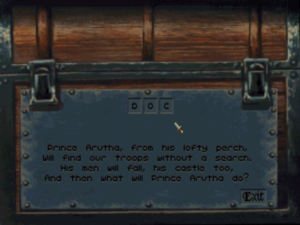
A puzzle chest. The answer to this one, for the record, is “die.” Later riddles get much more complicated, but the mechanics of the puzzles ingeniously prevent them from ever becoming completely insoluble. Many a player has had a significant other who couldn’t care less about the rest of the game, but loves these puzzle chests…
This mishmash of approaches can make the game feel like a throwback to the 1980s, when genres and their established sets of best practices were not yet set in stone, and when many games that may strike us as rather odd mashups today were being produced. We can certainly see John Cutter’s roots in Cinemaware here; that company made a career out of ignoring the rules of ludic genre in favor of whatever systems best conveyed the fictional genre they were attempting to capture. By all rights, Betrayal at Krondor ought not to work, as so many of Cinemaware’s games tended not quite to work. All of these different modes and play styles — the puzzle chests in particular seem beamed in from a different game entirely — ought to add up to a hopelessly confusing muddle. Somehow, though, it does work; Betrayal at Krondor actually isn’t terribly hard to come to grips with initially, and navigating its many modes soon becomes second nature.
One reason for this is doubtless also the reason for much else that’s good about the game: its unusually extended testing period. When development was reaching what everyone thought to be its final stages, Dynamix sent the game to outside testers for what was expected to be a three-month evaluation period. Even this much usability testing would have been more than most studios were doing at this time. But the project, as so many game-development projects tend to do, ran way longer than expected, and three months turned into nine months of constant player feedback. While our universe isn’t entirely bereft of games that seem to have sprung into being fully-formed, by far the most good games attain that status only gradually, through repeated iterations of testing and feedback. Betrayal at Krondor came by its goodness in exactly this hard, honest way. Unlike a dismaying number of games from its time, this game feels like one that’s actually been played — played extensively — before it got released. The niggling problems that dog even many good games from the early 1990s (such as the infuriating inventory management and rudderless combat of Ultima VII) are almost completely absent here. Instead the game is full of thoughtful little touches to head off annoyance, the sort of touches that can only come from real player feedback.
The final verdict on its mishmash of graphical approaches, on the other hand, must be less positive. Betrayal at Krondor wasn’t a notably attractive game even by the standards of its day, and time has done it no favors; the project desperately needed a strong art director able to impose a unified aesthetic vision. The parts of it that have aged the worst by far are those employing digitized actors, who look almost unbelievably ludicrous, cutting violently against any sense of Tolkienesque grandeur Hallford’s prose might be straining to evoke. Most store-bought Halloween costumes look higher rent than this bunch of survivors of an explosion at the Loony Tunes prop department. John Cutter acknowledges the problems:
We digitized a lot of the actors, and we assumed they were going to be so pixelated that the makeup and costumes didn’t have to look that great. They just kind of had to be… close. But by the time we launched the game the technology had improved… yeah. You could see the elastic bands on the fake beards. It was pretty bad. I wasn’t crazy about a lot of the graphics in the game.
Tellingly, the use of digitized actors was the one place where Betrayal at Krondor didn’t blaze its own trail, bowing instead to contemporary trends.
For all of Betrayal at Krondor‘s welcome willingness just to try lots of stuff, its approach to story remains its most memorable and interesting quality of all. This aspect of the game was so front and center in the mind of John Cutter that, when he wrote a brief few paragraphs of “Designer Notes” for the manual, it came to occupy more than half the space:
We decided the game should be an interactive story. Characters would be multidimensional and capable of stirring the player’s emotions. The story would be carefully plotted with lots of surprises, a good mix of humor and pathos, and abundant amounts of mystery and foreshadowing to keep the player intrigued.
Balancing play against plot is the most confounding job any game designer can face on a fantasy role-playing game. In Betrayal at Krondor, we have integrated our plot so that it provides ample gaming opportunities, while also giving the player a sense of time, place, and purpose. This is achieved by making an onscreen map available to the player at all times, and by creating short-term goals — the nine chapters in the game — which give us a unique opportunity to tell a progressive story that still gives the player plenty of freedom to explore and adventure without being confined to a scripted plot.
In thus “balancing play against plot,” Cutter and Hallford were attempting to square a circle that had been bedeviling game designers for a long time. All of the things that mark a rich story — characters with agendas of their own; big reveals and shocking turns; the classic narrative structure of rising action, climax, and denouement; dramatic confrontations with expressive dialog — cut against the player’s freedom to go wherever and do whatever she wants. As a designer, says the conventional wisdom, you can’t have it all: you must rather stake out your spot on a continuum where at one end the player does little more than click her way through a railroaded plot line, and at the other she does absolutely anything she wants, but does it in a world bereft of any larger meaning or purpose. Adventure games tend to lean toward the set-piece-storytelling end of the continuum, CRPGs toward open-ended interactivity.
Even CRPGs from around the time of Betrayal at Krondor which are written expansively and well, such as Ultima VII, generally send you wandering through other people’s stories rather than your own. Each city you explore in that game is full of little story stubs revolving around the inhabitants thereof rather than yourself; your role is merely to nudge these dramas of others along to some sort of resolution before you disappear again. Your larger agenda, meanwhile, boils down to the usual real or metaphorical collecting of pieces to assemble the big whatsit at the end — a series of actions which can be done in any order precisely because they’re so simplistic in terms of plot. You’re in the world, but never really feel yourself to be of it.
Cutter and Hallford, however, refused to accept the conventional wisdom embodied by even so markedly innovative a CRPG as Ultima VII. They were determined to deliver the best of both worlds — an adventure-game-like plot and CRPG-like freedom — in the same game. Unsurprisingly, it doesn’t quite work as a whole. Nevertheless, the attempt is well worth discussing.
Betrayal at Krondor positively trumpets its intentions via the metaphors which its user interface employs. Once again ignoring all of the fashions of its time, which emphasized the definitively non-textual aesthetic of the interactive movie, this game presents itself as an interactive book with an enthusiasm worthy of the 1980s heyday of bookware. The overriding look of the game, to the extent it has one amidst all its clashing graphical styles, is of an illuminated manuscript, ink on yellowing parchment. The story is told in a literary past tense, save points become “bookmarks,” and, as Cutter himself noted in the extract above, the whole experience is divided into nine neat “chapters.”
The game is relentless about describing every single event using full sentences worthy of one of Feist’s novels. Sometimes the end result can verge on the ridiculous. For example, every single time you search the body of an opponent you’ve just killed — something you’ll be doing an awful lot of, what with this being a CRPG and all — you’re greeted with a verbose missive:
Owyn looked for supplies. Feeling like a vulture, he turned the body this way and that as he searched for anything that might be of value to them on their journey. All in all, he supposed that if he were the dead man, it wouldn’t matter to him any longer what happened to his belongings.
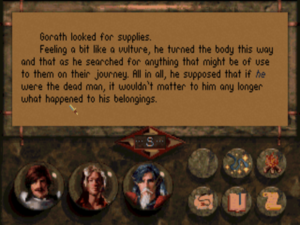
Every character has the exact same feeling when searching a dead body, despite very different personalities. This is one of many places where Betrayal at Krondor‘s verbosity winds up undercutting rather than strengthening its sense of mimesis.
Of course, you can and quickly will learn to click right through this message and its one or two random variations each time you search a corpse. But it remains an amusing sign of just how committed Cutter and Halford were to their “interactive storybook” concept in even the most repetitive, mechanical areas of their creation. (Imagine what Pac-Man would be like if the title character stopped to muse about his actions every time he swallowed a power pill and killed another ghost…)
All of this past-tense verbosity has an oddly distancing effect. You don’t feel like you’re having an adventure so much as reading one — or possibly writing one. You’re held at a remove even from the characters in your party, normally the primary locus of player identification in a game like this one. You don’t get to make your own characters; instead you’re assigned three of them who fulfill the needs of the plot. And, while you can guide their development by earning experience points, improving their skills, and buying them new spells and equipment, you don’t even get to hang onto the same bunch through the whole game. Characters are moved in and out of your party from chapter to chapter — again, as the needs of each chapter’s plot requires. The final effect almost smacks of a literary hypertext, as you explore the possibility space of a story rather than actually feeling yourself to be embodying a role or roles in that story. This is certainly unique, and not necessarily a bad thing. It’s just… a little strange in relation to what we tend to think of CRPGs as being. These are, after all, role-playing games.
As I’ve described it so far, Betrayal at Krondor sounds more akin to the typical Japanese than the Western CRPG. The former tend to lie much closer to the set-piece-story end of our continuum of design; they provide a set, fairly linear plot to walk through, generally complete with predefined characters, rather than the degree of world simulation and open-ended exploration that marks the Western tradition. (A Japanese CRPG is, many a critic has scoffed, just a linear story in which you have to fight a battle to see each successive scene.) Yet Betrayal at Krondor actually doesn’t fit comfortably with that bunch either. For, as Cutter also notes above, he and his design partner were determined to “give the player plenty of freedom to explore and adventure without being bound to a scripted plot.”
Their means of accomplishing that relies once again on the chapter system. Each chapter begins and ends with a big helping of set-piece plot and exposition. In between, though, you’re free to go your own way and take your time in satisfying the conditions that will lead to the end of the chapter. In the first chapter, for example, your assignment is to escort a prisoner across much of the map to the capital city of Krondor. How and when you do so is up to you. The map is filled with encounters and quests, most of which have nothing to do with your central mission. And when you eventually do finish the chapter and continue on with the next, the same map gets repopulated with new things to do. This is the origin of a claim from Dynamix’s marketing department that Betrayal at Krondor is really nine CRPGs in one. In truth, it doesn’t quite live up to that billing. Only a subsection of the map is actually available to you in most chapters, much of it being walled off by impenetrable obstacles or monsters you can’t possibly kill. Even the repopulation that happens between chapters is far from comprehensive. Still, it’s an impressively earnest attempt to combine the pleasures of set-piece plotting with those of an emergent, persistent virtual world.
And yet the combination between set-piece storytelling and emergent exploration always feels like just that: a combination rather than a seamless whole. Cutter and Hallford didn’t, in other words, truly square this particular circle. There’s one massive block of cognitive dissonance standing at the center of it all.
Consider: you’re told at the beginning of the first chapter that your mission of escorting your prisoner to the capital is urgent. Political crisis is in the air, war clouds on the horizon. The situation demands that you hurry to Krondor by the shortest, most direct path. And yet what do you do, if you want to get the most out of the game? You head off in the opposite direction at a relaxed doddle, poking your nose into every cranny you come across. There’s a tacit agreement between game and player that the “urgent” sense of crisis in the air won’t actually evolve into anything until you decide to make it do so by hitting the next plot trigger. Thus the fundamental artificiality of the story is recognized at some level by both game and player, in a way that cuts against everything Betrayal at Krondor claims to want to be. This isn’t really an interactive storybook; it’s still at bottom a collection of gameplay elements wired together with chunks of story that don’t really need to be taken all that seriously at the end of the day.
The same sense of separation shows itself in those lengthy chapter-beginning and -ending expository scenes. A lot of stuff happens in these, including fights involving the characters ostensibly under your control, that you have no control over whatsoever — that are external to the world simulation. And then the demands of plot are satisfied for a while, and the simulation engine kicks back in. This is no better or worse than the vast majority of games with stories, but it certainly isn’t the revolution some of the designers’ claims might seem to imply.
Of course, one might say that all of these observations are rather more philosophical than practical, of more interest to game designers and scholars than the average player; you can suspend your disbelief easily enough and enjoy the game just as it is. There are places in Betrayal at Krondor, however, where some of the knock-on effects of the designers’ priorities really do impact your enjoyment in more tangible ways. For this is a game which can leave you marooned halfway through, unable to move forward and unable to go back.
Dead ends where the only option is to restore are normally less associated with CRPGs than adventure games; they played a big role in all but killing that genre as a commercial proposition by the end of the 1990s. CRPGs are usually more forgiving thanks to their more simulation-oriented nature — but, sadly, Betrayal at Krondor is an exception, due to a confluence of design decisions that all seem perfectly reasonable and were all made with the best of intentions. It thus provides a lesson in unexpected, unintended consequences — a lesson which any game designer would be wise to study.
The blogger Chet Bolingbroke, better known as The CRPG Addict, made these comments recently in the context of another game:
One of the notable features of CRPGs in contrast to some other genres is that they almost always support a Plan B. When one way of playing doesn’t work out, you can almost always resort to a more boring, more banal, grindier method of getting something done. I tend to mentally preface these fallback plans with “I can always…” Having a tough time with the final battle? “I can always reload again and again until the initiative rolls go my way.” Can’t overcome the evil wizard at your current level? “I can always grind.” Running out of resources? “I can always retreat from the dungeon, head back to town and buy a ton of healing potions.”
The most frustrating moments in CRPGs are when you suddenly find yourself with no way to finish “I can always” — when there is no Plan B, when luck alone will never save you, when there isn’t even a long way around.
This is precisely the problem which the player of Betrayal at Krondor can all too easily run into. Not only does the game allow you to ignore the urgent call of its plot, but it actually forces you to do so in order to be successful. If you take the impetus of the story seriously and rush to fulfill your tasks in the early chapters, you won’t build up your characters sufficiently to survive the later ones. Even if you do take your time and explore, trying to accrue experience, focusing on the wrong skills and spells can leave you in the same boat. By the time you realize your predicament, your “Plan B” is nonexistent. You can’t get back to those encounters you skipped in the earlier, easier chapters, and thus can’t grind your characters out of their difficulties. There actually are no random encounters whatsoever in the game, only the fixed ones placed on the map at the beginning of each chapter. I’m no fan of grinding, so I’d normally be all in favor of such a choice, which Cutter and Hallford doubtless made in order to make the game less tedious and increase its sense of narrative verisimilitude. In practice, though, it means that the pool of available money and experience is finite, meaning you need not only to forget the plot and explore everywhere in the earlier chapters but make the right choices in terms of character development there if you hope to succeed in the later ones.
On the whole, then, Betrayal at Krondor acquits itself better in its earlier chapters than in its later ones. It can be a very immersive experience indeed when you first start out with a huge map to roam, full of monsters to battle and quests to discover. By the time said map has been repopulated three or four times, however, roaming across its familiar landmarks yet again, looking for whatever might be new, has begun to lose some of its appeal.
And then, as Neal Hallford would be the first to admit, Betrayal at Krondor is written above all for Raymond E. Feist fans, which can be a bit problematic if you don’t happen to be among them. This was my experience, at any rate. As an outsider to Feist’s universe, watching characters I didn’t know talk about things I’d never heard of eventually got old. When an “iconic” character like Jimmy the Hand shows up, I’m supposed to be all aflutter with excitement, but instead I’m just wondering who this latest jerk in a terrible costume is and why I should care. In my view, the game peaks in Chapter 3, which takes the form of a surprisingly complex self-contained murder mystery; this is a place where the game does succeed in integrating its set-piece and emergent sides to a greater extent than elsewhere. If you elect to stop playing after that chapter, you really won’t miss that much.
As I noted already, Betrayal at Krondor ran dramatically over time and over budget. To their credit, Dynamix’s management didn’t push it out the door in an unfinished state, as was happening with so many other games during this period of transition to larger and more complex productions. Yet everyone, especially poor Neal Hallford, felt the pressure of getting it done. Not only did he write almost every word of the considerable amount of text in the game, but he also wrote much of the manual, and somehow even wound up on the hook for the puff pieces about it in Sierra’s customer newsletter. After weeks of virtually living at the office, he collapsed there one day, clutching at his chest. His colleagues rushed him to the hospital, believing he must be having a heart attack even though he was still in his twenties. It turned out that he wasn’t, but the doctor’s orders were clear: “You’re not going back to work for a week. Get some rest and eat something proper. No pizza. No soft drinks. It’s either this or next time you leave work it’ll be in a hearse.” Such are the perils of commercial game development.
Betrayal at Krondor finally shipped on June 15, 1993, an inauspicious time in the history of CRPGs. Origin Systems was about to take the Ultima series in a radically different direction after a less than overwhelming response to Ultima VII; Sir-Tech was about to put their equally long-running Wizardry series on ice for similar reasons; SSI was facing dwindling sales of their Dungeons & Dragons games and was on the verge of losing the once-coveted license; other publishers were quietly dropping less prominent franchises and would-be franchises. The several years to come would be remembered by CRPG fans as the Dark Age of their favored genre; relatively few of games of this stripe would be released at all, and those that were would be greeted by the marketplace with little enthusiasm.
Initially, Dynamix’s first CRPG performed about as well as you might expect in this environment. Despite some strong reviews, and despite whatever commercial advantages the Feist license brought with it, sales were slow. Cutter and Hallford had gone into Betrayal at Krondor imagining it to be only the first entry in a new series, but it soon appeared unlikely that a sequel would come to pass. Sierra, Dynamix’s parent company, was having an ugly year financially and wasn’t in the mood to make another expensive game in a passé genre, while Jeff Tunnell, the man who had had the original idea for Betrayal at Krondor, had stepped down from day-to-day management at Dynamix in favor of running a smaller subsidiary studio. Cutter and Hallford begged their new bosses to give the game time before making any final decisions, noting that good reviews and positive word of mouth among fans of the novels could yet pay dividends. The leadership team responded by laying Cutter off.
But over time, Betrayal at Krondor continued to sell steadily if not spectacularly. Then a genuine surge in sales came in early 1994, when a CD-ROM-based version featuring a lovely soundtrack and enhanced if still less than lovely graphics was released, just as the influential magazine Computer Gaming World was crowning the game the best CRPG of the previous year. Dynamix now made a belated attempt to start work on a sequel, asking Neal Hallford to helm it. But he considered the budget they were proposing to be inadequate, the time frame for development far too compressed. He turned it down, and left the company shortly thereafter. Dynamix would never make a second CRPG, whether set in Midkemia or anywhere else.
Nevertheless, that wasn’t quite the end of the story. Feist had been profoundly impressed by Betrayal at Krondor, and now took the ludic possibilities of his series of novels much more seriously than he had before seeing it. As soon as the Dynamix license expired at the beginning of 1995, he began to shop the property around once again. Initially, however, he found no one willing to pay his price, what with the current state of the CRPG market. While interactive Midkemia was thus in limbo, Sierra came up with another, cheaper idea for capitalizing on the first game’s slow-burning success. Lacking the Midkemia license, they decided to leverage the first half of the Betrayal at Krondor name instead, releasing the in-house-developed Betrayal in Antara in 1997. It copied some of the interface elements and gameplay approaches of its predecessor, but moved the action to a generic fantasy world, to less satisfying effect.
And yet the story still wasn’t over. Feist had finally found a buyer for the Midkemia rights in 1996 in the form of a publisher known as 7th Level, who signed a studio known as PyroTechnix to make a direct sequel to Betrayal at Krondor at last. But when 7th Level ran into financial difficulties, Sierra of all publishers bought back the rights, along with PyroTechnix’s development contract. The latter completed the game and saw it released under the Sierra imprint in 1998. Feist played a much more active role on Return to Krondor, the game in question, than he had on Betrayal at Krondor, yet the result once again pales in comparison to the first Midkemia game, perhaps because Cutter and Hallford once again played no role. Its mixed reception marks the last official implementation of Midkemia on a computer to date, excepting only a brief-lived MMORPG.
Two of Feist’s later books, 1998’s Krondor: The Betrayal and 2000’s Krondor: Tear of the Gods, were based upon the first and second Midkemia computer game respectively. Thus Midkemia completed its long, strange transmedia journey from game to book to game to book again. Feist continues to churn out books apace today, but they don’t sell in the same quantities anymore, bearing as they do the stale odor of a series long past its sell-by date.
For many of us, Betrayal at Krondor will always remain the most memorable entry in the exercise in competent derivation that is Midkemia as a whole; the game is ironically much more innovative in its medium than the novels which spawned it are in theirs. Indeed, it’s thoroughly unique, a welcome breath of bold originality in a genre usually content to rely on the tried and true, a game which doesn’t work perfectly but perhaps works better than it has any right to. As a writer, I can only applaud a game which takes its writing this seriously. If it’s not quite the revolutionary amalgamation of narrative and interactivity that its creators wanted it to be, it’s still a heck of a lot more interesting than your average dungeon crawl.
(Sources: the book Designers and Dragons by Shannon Appelcline; Sierra’s newsletter InterAction of Winter 1992 and June 1993; Compute! of December 1993; Computer Gaming World of February 1993, April 1994, June 1994, August 1996, and October 1998; Electronic Games of October 1992 and June 1993; Questbusters of November 1991, August 1992, April 1993, and August 1993; Retro Gamer 84; Dragon of January 2004; the CD-ROM Today bundled CD-ROM of August/September 1994. Online sources include Matt Barton’s interviews with Neal Hallford, Jeff Tunnell, and John Cutter in Matt Chat episodes 191, 192, 201, 291, 292, and 293; Neal Hallford’s blog series Krondor Confidential; the “History of Midkemia Press” on the same publisher’s website.
Betrayal at Krondor and Betrayal in Antara are available as a package purchase at GOG.com.)
from Hacker News https://ift.tt/2o2RuGJ
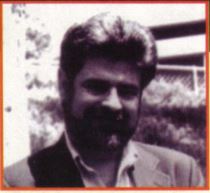
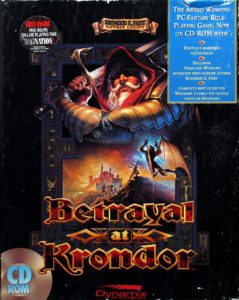



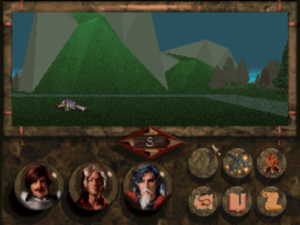
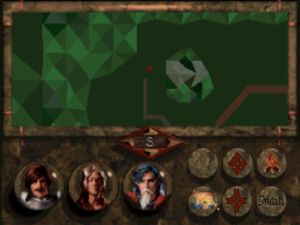
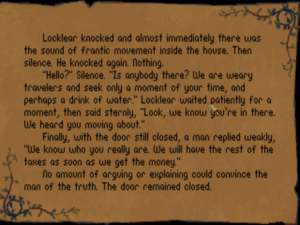
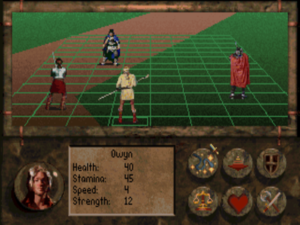
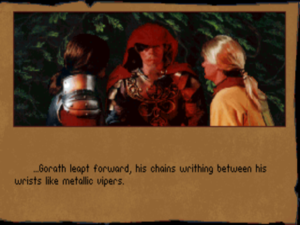
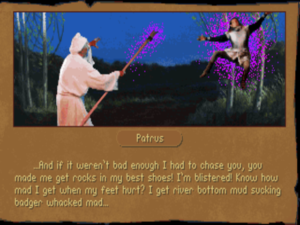
No comments:
Post a Comment
Note: Only a member of this blog may post a comment.